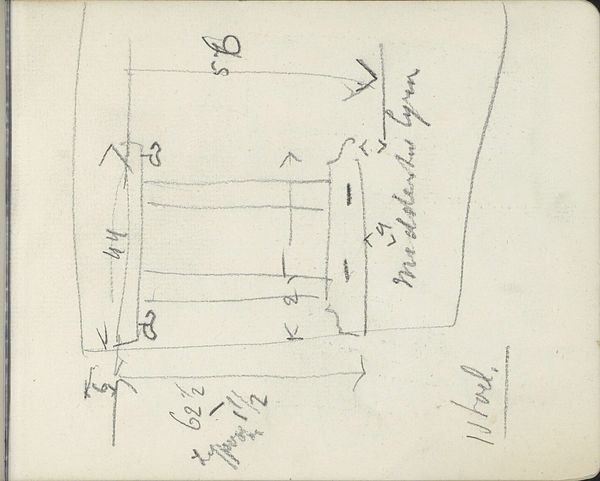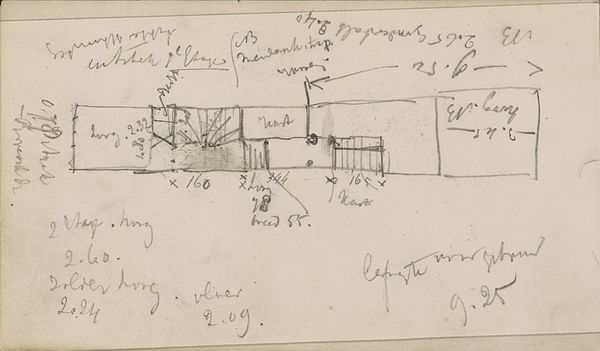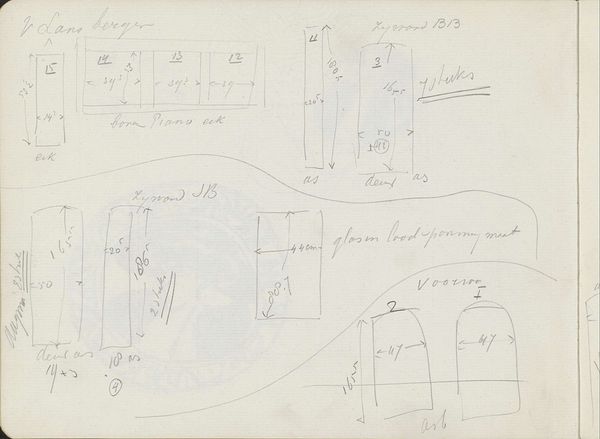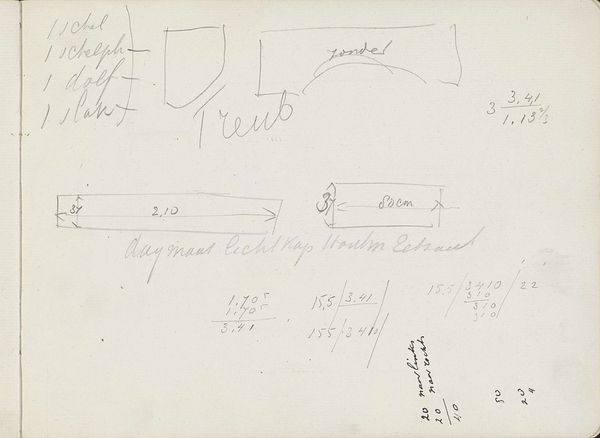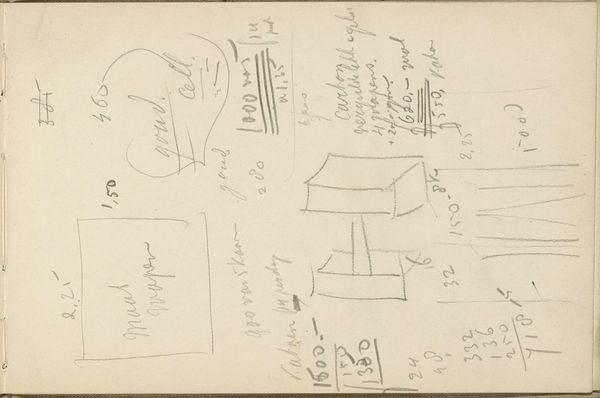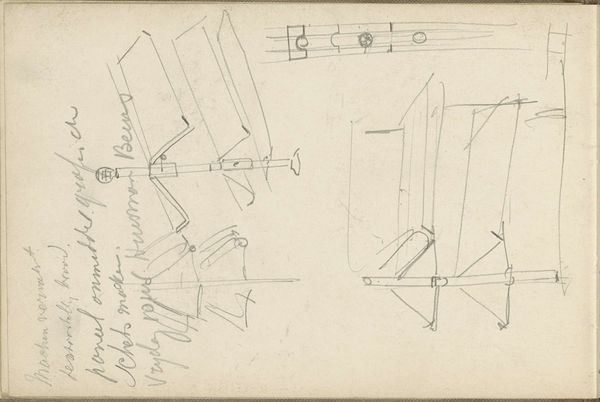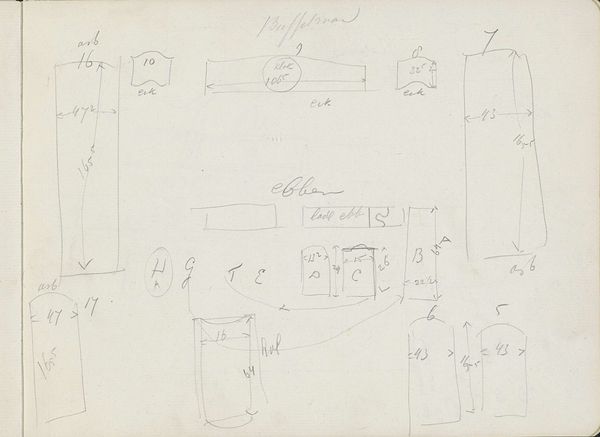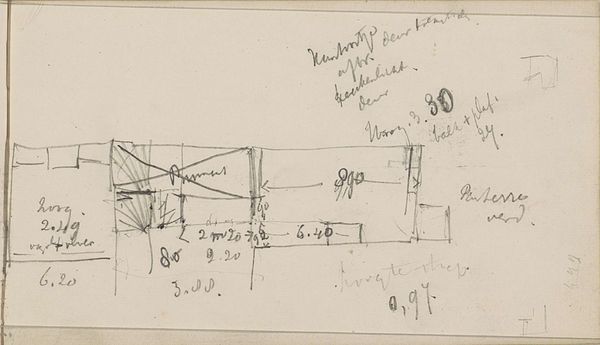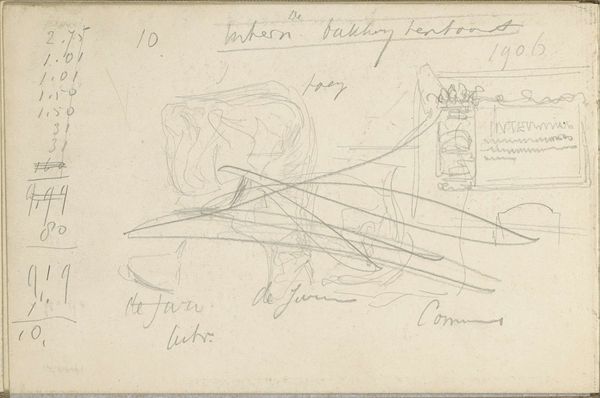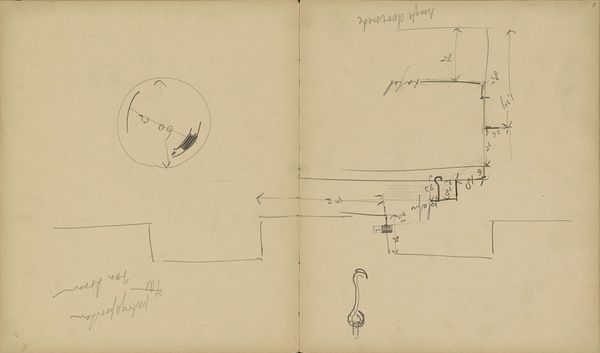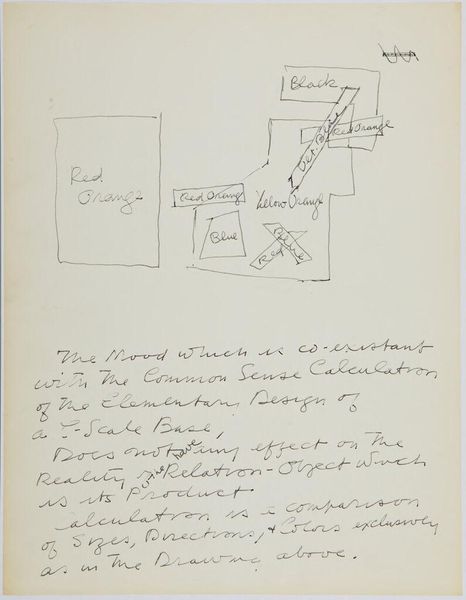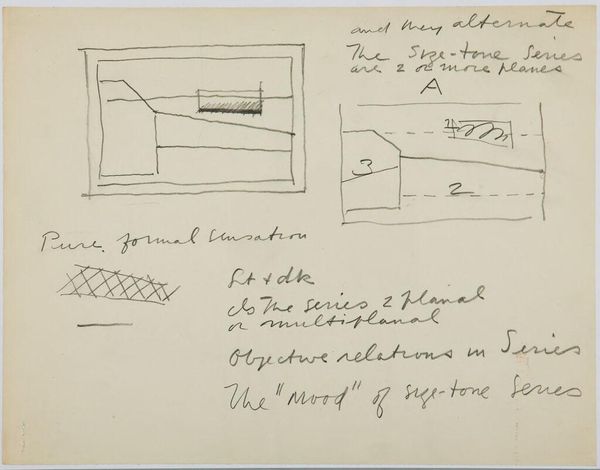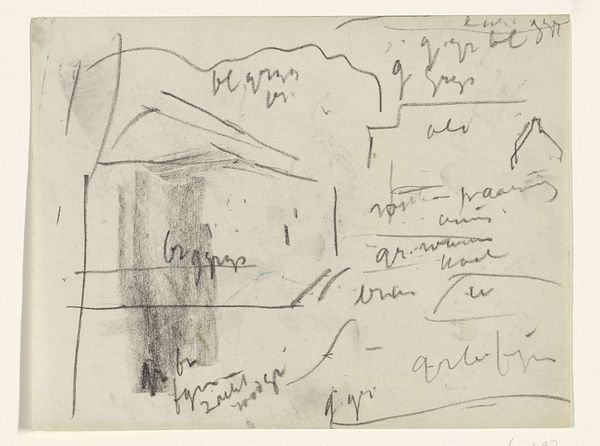
drawing, pencil
#
drawing
#
geometric
#
pen-ink sketch
#
pencil
#
modernism
Copyright: Rijks Museum: Open Domain
Curator: Looking at this open notebook page, entitled "Architectuurdetails en een plank," we see the hand of Carel Adolph Lion Cachet, sketching in pencil and ink around 1934. It's held in the collection of the Rijksmuseum. Editor: It’s fragmented. Isolated elements – arches, straight lines, swirling shapes. The feeling is less about completed forms and more about... potential, like a record of fleeting thoughts on paper. Curator: That potential you describe speaks to the modernist ethos underpinning Cachet's approach, disrupting traditional artistic conventions. Think of the economic turmoil of the 1930s, and the sense of social disruption: these abstract forms echo that feeling. This sketch becomes an exercise in breaking free from representation, much like avant-garde writers experimenting with freeform poetry or jazz musicians embracing improvisation. Editor: It is hard to miss all of the writing on this page. I notice several phrases, perhaps design specifications or client notes, surrounding the sketches. They appear to denote material instructions and project timelines. In their way, words serve as symbols to give this piece the impression of utility more than decoration. It’s almost like a proto-blueprint that blends practicality with something poetic. Curator: I like your noticing the interplay of text and image, as it reveals much about the time period, too. In many ways, it speaks to an intersectional narrative where functionality met aesthetics—challenging, in its own quiet way, the boundaries between design, labor, and artistry during a period of immense change and often devastating socio-economic policies. Editor: It's interesting to me that something as straightforward as architectural detail is so open to interpretation when separated from any actual, existing structure. The artist's eye isolates symbolic meaning. We begin to consider what these arches might signify—support, gateway, historical memory, for instance—and their presence begins to speak more to broader symbolic connotations than purely the functional components of an architecture design. Curator: What’s truly compelling is the space this work creates. It fosters dialogue. By recognizing the piece’s intentional fragmentations, perhaps, as observers, we confront our own incomplete understanding of a pivotal moment in cultural history. Editor: Right—fragmentation makes us engage with our own capacity for connection. It becomes more about possibility than answers. It offers a chance for imagination, inviting each viewer to find some resonance in this collection of symbols.
Comments
No comments
Be the first to comment and join the conversation on the ultimate creative platform.
